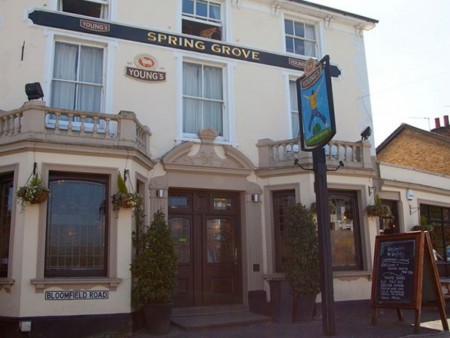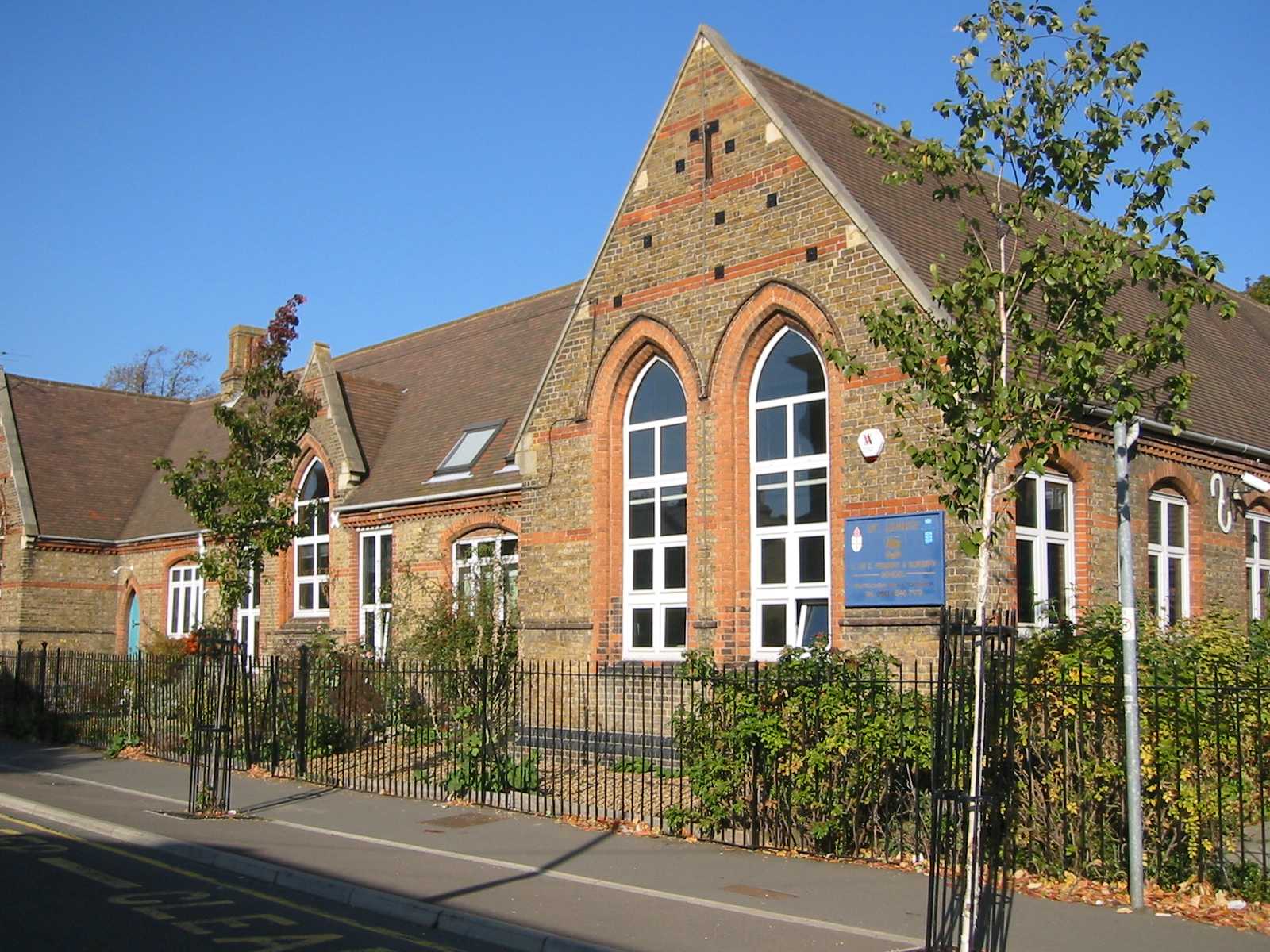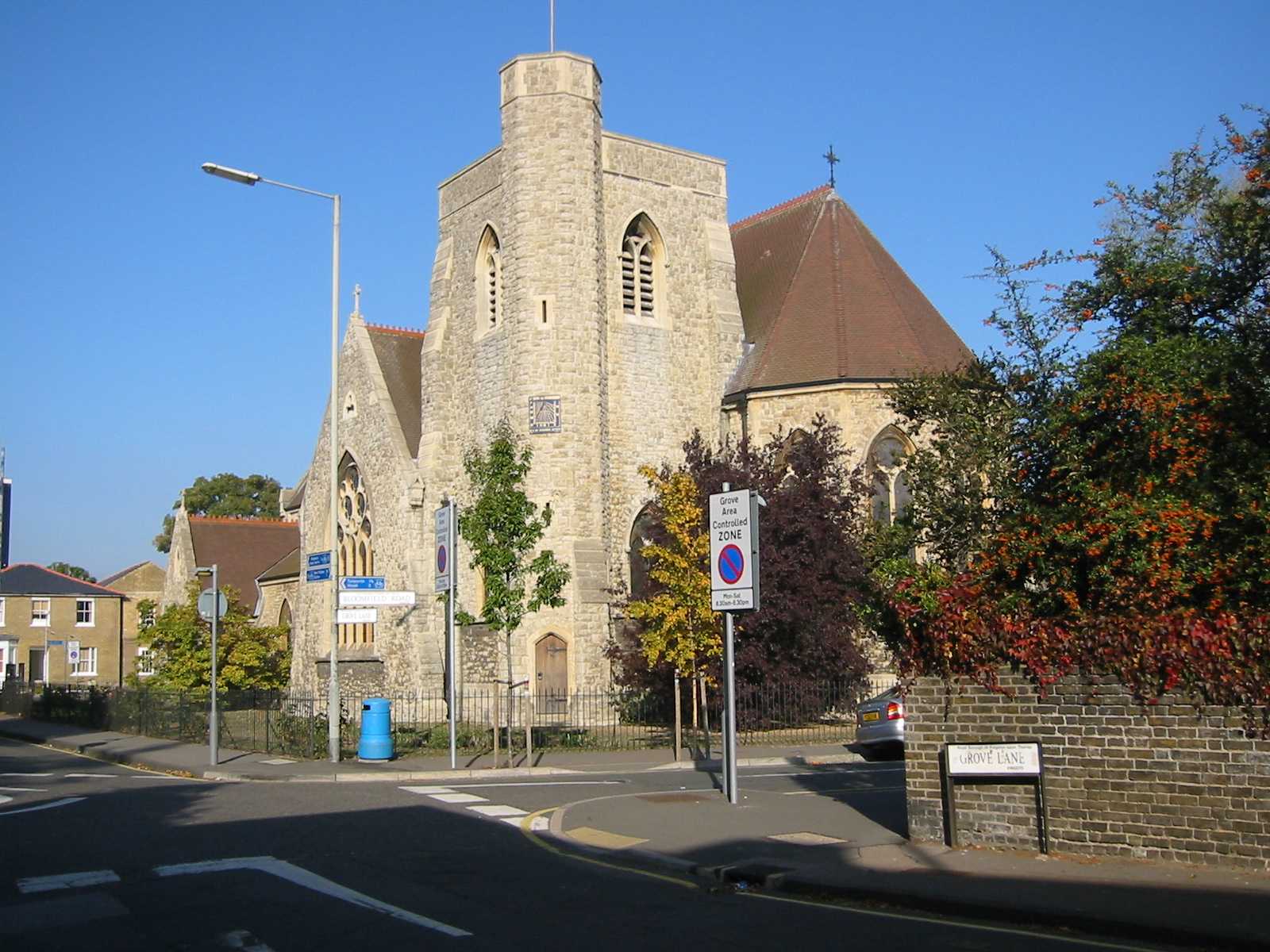|
The Victorian estate at the heart of the Spring Grove was built on land purchased for development in 1865 and was probably intended, at least in part, to provide affordable homes for people working in Kingston. The existing Grove Lane and Green Lane (now Bellevue Road) were incorporated in the estate plan, and Portland, Springfield, Bloomfield and Alexandra (now Denmark) Roads were added. It was hoped that the new estate would soon be linked to Knights Park by a bridge, although in the event this took nearly 30 years to achieve. It was also several years before the roads in Spring Grove were surfaced and properly drained, owing to prolonged argument between the Borough and the property owners as to who should pay.
Some of the earliest buildings were in Bloomfield Road - the row of four shops, the Spring Grove Hotel and the two facing terraces of houses beyond. The major developer was Palmer Porter, an established speculative builder, and a member of Kingston Corporation; but a number of smaller scale builders also bought plots and put up houses either for their own use of for sale.
By the time the 1871 Census was taken, Spring Grove had nearly 500 residents, including craftsmen and shopkeepers, laundresses and dressmakers, clerks and annuitants. Some households had one or two servants, but on the whole, this was a neighbourhood that supplied servants rather than employing them. There was a considerable social range within the estate. The larger houses of Springfield Road were at the top end of the scale whereas Portland Road was thought of as a distinctly rough area; being next to the heavily polluted Hogsmill would presumably have made it a less than wholesome place to live, as well.
A corrugated iron chruch was erected in 1870 on the corner of Springfield and Alexandra Roads, to be replaced in 1872 by the present St John's Church; and in 1871 a school was opened in a temporary building on part of the present school site in Portland road. By 1878, permanent school buildings for girls, boys and infants had been completed. The first vicar, Arnold Letchworth, and schoolmaster WH Legg, each stayed in post for 45 years, and both seem to have been very highly esteemed by the local community.
Spring Grove began to expand beyond its original boundaries in 1876, with the building of Alfred Road. By 1915, when Letchworth reitred and the Estate reached its half century, most of the land between Penrhyn Road and Oil Mill Lane (Villiers Road) was built up.
Isobel Robinson, April 2004
Further information can be found in Isobel's book "Spring Grove 1865-1880, Birth of a Community". Copies are available from Kingston Museum or directly from Isobel herself (8546-5931).
|



|